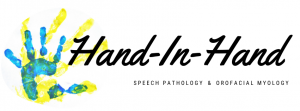– Stuffy nose?
– Line across the nose?
– Rubbing eyes or nose often?
– Hyponasal-sounding speech?
– Dark rings under the eyes?
These are all signs of allergy. Parents may dismiss this as part of normal life, especially if they suffer from allergies themselves. And allergies can run in families.
However, mouth breathing is allergy’s ugly step sister. This is because nasal congestion prevents nose breathing, and the body switches to mouth breathing in an effort to get air. It’s ugly because the long-term effects of mouth breathing are significant, especially in children.

Possible side effects of mouth breathing include:
– Sleep problems, including obstructive sleep apnoea
– Neck problems
– Gut dysbiosis (upsetting the balance of gut bacteria)
– Tooth decay
– Development of a long, narrow face
– Development of small jaws, leading to teeth crowding
– Reflux
– Bad breath
– Sore throat
– Dry and cracked lips
– Other breathing problems
– Learning and attention problems, due to sleep problems
– Low tongue posture, frontal (interdental) lisp and tongue thrust swallow
– Hyponasal speech, which can impact on how well the child is understood
Identifying these issues as early as possible in children is essential. This is because mouth breathing can profoundly impact the development of their oral and facial features, as well as impact on their learning and development.
And so I would say, allergies are nothing to sneeze at!
If you are concerned that you or your child has air-born allergies and/or mouth breathing, you can get help. An Ear Nose and Throat doctor or Allergist may help to identify and treat the allergies. Common airborn allergens include dustmites, mould, pollen and pets. An Orofacial Myologist can help to re-establish nasal breathing and correct tongue position once the allergies are treated.










